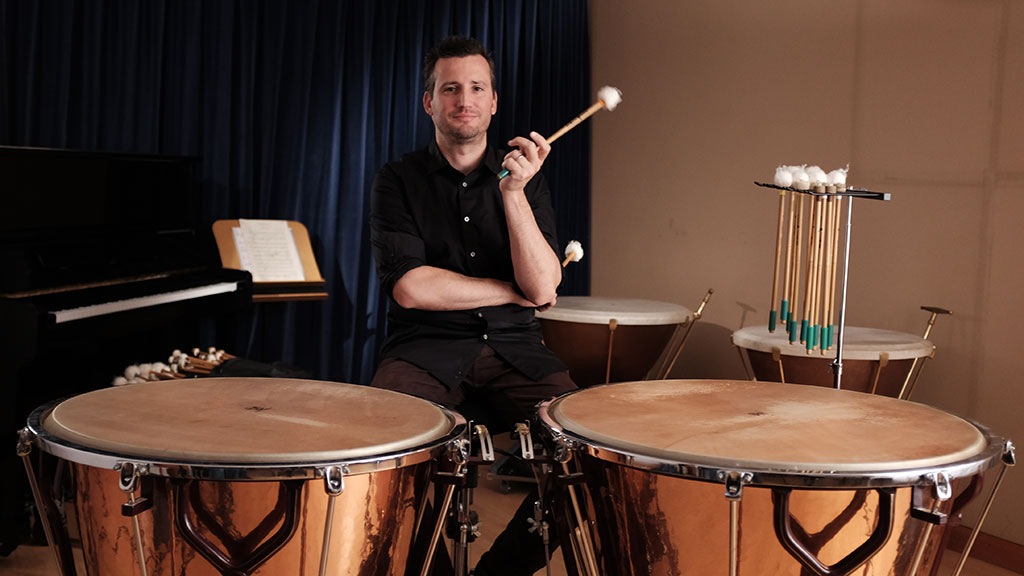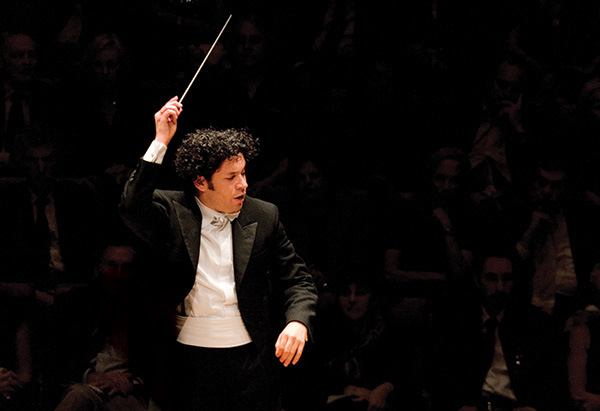Tense Times Call for Powerful Percussion
L.A. Phil’s Joseph Pereira Discusses His New, Anxiety-Inspired Concerto

“A percussion concerto doesn’t have the same set of rules as a piano concerto,” insisted Joseph Pereira. He should know. As principal timpanist of the Los Angeles Philharmonic, he regularly plays such pieces — and sometimes writes them. His latest work, a triple concerto for two percussionists and a timpanist titled Threshold, will premiere this weekend in two locations: Walt Disney Concert Hall and, on Saturday evening, The Granada Theatre. The virtuoso percussion duo Maraca2, plus the composer himself, will be the soloists. The program, conducted by music director Gustavo Dudamel, also includes Brahms’s First Symphony.
Pereira, who is in his 10th season with the L.A. Phil (and spent 10 years with the New York Philharmonic before that), is no stranger to Santa Barbara: He joined the Music Academy of the West faculty last year. In a recent interview, he described his new piece, and the challenges of being both a composer and a performer.

What are you trying to express with this work? I’m trying to capture that feeling of tension and anxiety, no matter which side of the fence, or fences, you are on. It seems like every day there’s something new to deal with.
How do you accomplish that? The strings of the orchestra often make percussive sounds. I call it “vertical bowing.” They’re bowing up and down the instrument. This creates an airy echo of a pitch. They’re taking on the character, the sound of the percussion.
The actual pitches the piece is built on symbolize physical speech — human interaction. The airy sound symbolizes nature. They represent something bigger than what’s going on now — something bigger than us.
There are also repetitive chanting rhythms. To me, they symbolize religion and hope for togetherness. Those three elements helped me to tie everything together.
Who are some of your influences as a composer? Bartók is a favorite. I spend a lot of time studying scores. I’m always looking for new pieces. Also, I’ve been playing in orchestras for 20 years now, so I’ve been indirectly influenced by Beethoven and other masters of the standard repertoire. Because of those influences, I’m very particular about the form of my pieces — how they move from one section to the next. I’m very strict about that.

How much latitude do the soloists have to improvise? There’s quite a bit. This duo likes to play high-energy music that has a groove feel to it. I had to find a way to give them the flexibility to do that when they wanted to. I’m pretty flexible about someone interpreting it, as long as the formal structure is there.
There’s a spot where they’re playing on lightly amplified ceramic tiles. Rhythms emerge, and then they go to a section where they create waves of sound by scraping two rocks. I wrote out the big-picture rhythms, but it’s going to be better in the end if they go with the rhythm that’s created by the circular motion of their hands.
Do you enjoy playing your own music? I try to separate my composer self from my performer self. I’ll write something and then take a step back to the other side and make it work [for the performer]. I finished this piece just before the holiday break. I then spent the break learning my part. It was strange. I felt like a different person.
4·1·1
CAMA presents the Los Angeles Philharmonic Saturday, January 27, 8 p.m., at The Granada Theatre (1214 State St.). Tickets are $39-$119. Call (805) 899-2222 or see camasb.org.



